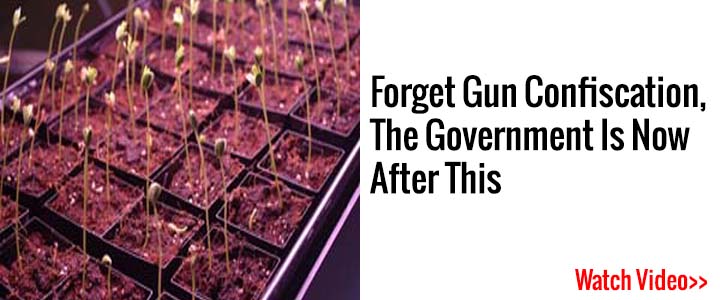Living green walls. You may have heard of them and thought they were no more than the latest design fad. However in truth, the concept dates back to the 1930′s and they are science fiction made fact!
No longer just of interest to architectural companies trying to win design awards, they are gaining attention from businesses of all sizes looking to improve their green credentials. This ultimate guide will introduce you to these beautiful structures of greenery by answering the most common questions we hear asked.
Before you know it, you’ll be boring your friends, colleagues and boss as you preach like one of the newly converted!
1) What are living green walls?
Living green walls are panels of plants, grown vertically using hydroponics, on structures that can be either free-standing or attached to walls. Living green walls are also referred to as vertical gardens, green walls, living walls or ecowalls.
When was the living green wall invented?
The idea for living green walls was first patented by Stanley Hart White in 1938, however it is Patrick Blanc’s name that resounds through the industry. After creating one of the most famous green walls at the Musee du Quai Branly in Paris, he was designated the godfather of the ‘vegetal wall’, sparking a revolution in sustainable architecture.
Now known as green facades, plants have probably been growing on buildings since the first stone was laid. Living green walls are the next generation, differing from climbing plants like ivy, as they are intricately planned collections of plants held in a structure away from the building.
These miraculous structures bring nature back into urban environments. As the concrete jungle expands and pollution rises, the application of living green walls stands to reverse this trend. Incorporating carefully chosen selections of plants into cutting edge design, living green walls have been devised to help restore the natural balance.
2) What are the benefits of living green walls?
As we run out of green space in cities, living green walls can turn urban spaces back into something natural and beautiful. They can also improve air quality and provide health benefits.
How do living green walls improve air quality?
Ever since the industrial revolution, modern advancements have increased air pollution. In built-up areas, polluting gases and particulate matter are turning our air toxic, but we can utilize nature to reverse the damage we’re causing.
As children, we learn that plants naturally remove carbon dioxide and produce oxygen rich air. However, it’s less well-known that they also filter the air around them by absorbing and cleaning pollutants. This natural effect is multiplied by the sheer number of plants in living green walls.
A recent study into the effectiveness of green infrastructure for improving air quality in urban street canons (the gaps between large buildings), found living green walls can have a big impact. These gaps are hotspots for harmful pollutants, such as nitrogen dioxide and particulate matter, but living green walls have been shown to reduce levels by 40% and 60% respectively.
It’s not just pollutants outside that are a cause for concern as there are plenty of toxins inside that can adversely affect our health too.
Sick building syndrome is an issue of modern times. Buildings and offices are filled with invisible toxic fumes, from the furniture to the décor, that are silently choking us. This is of particular concern with the increasing number of people working indoors; a reported 80-90% of North Americans spend a significant period of the day inside.
Countless toxins are leeching from our indoor environment, such as formaldehyde, VOCs, trichloroethylene, carbon monoxide and benzene to name just a few. It’s long been known that adding office plants can improve the indoor air quality and interior green walls do just that, but on a much bigger scale that can benefit building inhabitants.
What are the visual benefits of living green walls?
Our modern society is all about image and nothing beats nature for beauty. A well-designed, flourishing green wall can drastically improve a building’s appearance, adding color and texture that won’t go out of fashion.
Each wall is specifically designed, using different varieties of plants which can vary in color, growth and flower to create living art, rather than a lawn on the side of your building.
Are they good for the building?
Buildings are adversely affected by changing temperatures that cause materials to expand and contract, which over time leads to deterioration, cracks and fissures.
Exterior living walls give buildings protection, not just from temperature fluctuations but also by diverting water away from walls during heavy rain and providing protection from UV radiation.
Can living green walls reduce energy costs?
The build-up of urban environments has caused a worrying side effect. Termed the urban heat island effect, research has found that metropolitan areas are considerably warmer that rural areas. This increase in temperature has a negative impact on the environment; from increasing energy demands in the summer to air pollution and emissions.
Living green walls help to offset this problem by providing shade from the effects of direct sunlight. Also, unlike brick or concrete, plant surfaces don’t store up solar energy, but reflect it. Both interior and exterior walls help to actively cool the air in summer by a process called evapotranspiration, reducing the need to cool the building.
But the advantages of green walls don’t end with summer. The panels, including the growth media, insulate the building and reduce energy costs for heating the building in winter as well.
How do they help to reduce noise levels?
Plants have long been used to reduce noise levels on freeways and other noisy roadways across North America and Europe. Living green walls expand on this idea. Vegetation naturally blocks high frequency sounds while the supporting structure can help to diminish low-frequency noise.
As the use of green walls increase, this could significantly change in urban environments. Eradicating the din of the hustle and bustle we’ve had to adapt to.
Do they increase the property value?
The U.S. Green Building Council developed the LEED program (Leadership in Energy and Environmental Design) as an internationally recognized green building certification system to help transform the design, construction and operation of buildings. Both commercial building- and home-owners can gain LEED credits, by satisfying certain green criteria.
The installation of living green walls, either inside or outside, secures LEED points for low water usage and efficient irrigation, which can help companies show their dedication to sustainable and eco-friendly solutions. This in turn helps to increase a property’s value by giving a positive perception of a modern building with an improved carbon footprint.
Are green walls good for staff morale?
Just being close to plants can have a positive impact on an individual’s wellbeing. Indeed, studies have shown that even seeing nature in the work environment can increase job satisfaction. The installation of a cutting-edge structure like a green wall also sends a message to employees that they are employed at a company that is concerned with providing them with a enjoyable work environment.
3) How Do Living Green Walls Work?
Living green walls are commonly hydroponic systems irrigated by a drip-irrigation method.
What types of plants are used in living green walls?
As each living green wall is individually designed for a specific project, all walls are different.
‘The interior plants are completely different from those used in exterior walls. The interior plants are tropical plants from the southern hemisphere, or southern states like Florida.’
‘Plants for the exterior are chosen based on climate zone as it’s important to use the correct plants in the correct zones. Plants are chosen that will survive in a zone higher than the location’s climate. For example, if you are in Boston we’d pick plants that could survive in a more northern climate. Therefore, the further south you go the more species of plants that will grow and so a wider choice of plants is available for use,’ says Matt Hills, Architect I with Ambius.
Which plant species thrive in living green walls?

‘There are the primary species of plants that do well in green walls, specifically ones that have a wide range of tolerances. Certain plants are very picky and they degrade very quickly, so if they do not get enough water, they would fail very quickly. While other plants have a little more of a grace period, where they don’t die as quickly and are able to adapt better to their environments,’ says Matt Hills.
Can a living green wall feature a custom design?

The walls can be designed to customer’s requirements in light of expert advice. This means that there are factors that can be decided about the overall design, including consultation about which plants are used from those that will survive in the climate zone and also, for Sage systems, control over the arrangement so that it’s possible to create a customized pattern, logo or TV screens.
Are there different types of living green walls?

Green walls are organized into panel and tray systems or freestanding walls, meaning there is a wall suitable for any space.
- Panel systems, like Sage and Prowall, have plants pre-grown into the panels and can be used inside or out, and in any climate.
- VersaWall is a tray system, which is popular for indoor displays. Plants are pre-grown off-site and inserted into the wall, which offers a great degree of versatility that can be exploited to cover entire surfaces or designed as living art.
- Freestanding walls are most commonly used indoors and are most easily changed, either by changing the location or changing the plants.
Are living green walls expensive?
As with all new technologies green wall systems don’t come cheap, but there are a number of pricing levels to suit your budget.
The cheapest option is walls where the plants are planted on-site, like the Woolly Pocket system, which reduces the cost of pre-growing plants elsewhere. However, there won’t be full coverage of plants and it may be a year before the plants are flourishing.
Alternatively, green walls that are complete upon installation require plants to be pre-grown.
‘Some of the systems, SAGE for example, pre-grow the plants in a nursery for 8-12 weeks. The price reflects that fact that you are paying the nursery, paying for fertilizers and maintenance and then for them to be shipped to site, where they are installed,’ said Matt Hills.
Can living green walls be used to grow food?
Some systems are designed specifically for herbs and vegetables and vertical gardens like these can be a great solution to growing food in a lack of space.
However it’s not usually recommended to install green walls in restaurants:
‘Using green walls to grow food indoors isn’t something we suggest. Although there’s no reason why it can’t be done, once you grow the plants and cut them off you are leaving an empty wall. The interior of restaurants most often don’t have the lighting that is needed. Also, there is the less-than-satisfactory aesthetics of growth lights and the emptiness of the wall after the vegetables and herbs have been cut.‘ – Matt Hills
4) Where Can Living Green Walls Be Used?

Living walls can be fitted to both new builds and refurbishments, from adventurous garden projects to large commercial developments. Completely versatile, they can be installed inside offices or attached to the outside of buildings.
Public sectors will certainly benefit from the environmental gains of the systems contributing to their CO2 reduction targets, but any industry can reap the rewards.
Can I install a green wall in my home?
The flexibility of green walls makes them perfect for all environments. Just like with office buildings, living green walls can be installed both inside and out.
All good living green wall specialists will be able to discuss your requirements and design a solution that is suited to your needs.
5) Are Living Green Walls Difficult to Maintain?

The simple answer is yes, but the good news is that customers aren’t left alone to tackle the initial maintenance. Matt Hills clarified the point.
‘To ensure success of the wall, green wall maintenance is critical. Most companies insist on a mandatory one year warranty with their green walls. At Ambius, this has to be in place before we can go ahead with the installation. We make sure the wall is installed correctly and then maintained properly for the first year. After that, we can continue to care for the wall depending on the client’s preference.
This is the most critical time for green walls, especially the first few months. It’s essential to get the irrigation and its timing right. Our reputation and that of our clients is at stake so it’s important for everyone involved to ensure the plants don’t fail.‘
How do you water a living green wall?
Most green walls are designed with a drip-irrigation system, which maximizes the use of water and is set up using an automated system that times the irrigation to minimize water waste.
Recirculation systems are the most efficient. They reuse the water repeatedly, pumping the water from the bottom to the top, until there’s no water left. The tank is then refilled. Alternatively, direct irrigation is an option for spaces that don’t have room for tanks.
Read the Greener on the Inside blog post about living green wall irrigation here
How long do living green walls last?
As a reasonably new technology, the lifespan of living green walls is difficult to declare with certainty. It’s been seen that the hardware, the panels and the growth media, can last up to 25 years, however how long the plants will survive is trickier to establish.
Check these preparedness and self-sufficiency solutions recommended by the survival community
As Matt Hills explains:
‘It’s hard to tell how long the plants will live. They will continue to live until their roots run out of space and so they won’t be able to grow any larger. It’s difficult to give an exact date but the plants could potentially grow sustainably in their panels for at least five to ten years before they will need to be replaced.
If you have a tray system, where the plants can be taken in and out, they will only last about a year and then they need to be replaced.‘
Can living walls survive in all weather conditions?
Exterior plants are specially selected so that the walls are can cope with the weather in one particular location.
‘Every area has a micro-climate. For example, a courtyard can be totally different to what’s outside, or next door. Until you install a green wall, you can’t be sure of the exact conditions. This is why maintenance, and the one year warranty, is important – to manage the adjustments needed in its micro-climate,‘ remarked Matt Hills.
In winter the plants, like any other, will go dormant but the aesthetics of the walls across seasons is something that is considered during the design stage.
‘An aspect that goes into the overall design, which will be discussed with the client, is whether they want green the whole year round. There are plants, the evergreens, that will change color but keep their leaves through winter but these are limited to a couple of species. Weather has an impact – part of the maintenance to adjusting the system to the conditions on the building,‘ said Matt Hills.
Living green walls are the future. With the benefits to health and happiness, they are a revolution that wants to see the end of concrete and the start of nature reclaiming urban space.
Via ambius.com
Self-sufficiency and Preparedness solutions recommended for you:
The Lost Ways (The vital self-sufficiency lessons our great grand-fathers left us)
Survival MD (Knowledge to survive any medical crisis situation)
Survival System (Learn The 7 Secrets Every Family Must Know To Survive Any Disaster Or Crisis)
BulletProof Home (A Prepper’s Guide in Safeguarding a Home)
Lightsoutusa (You will have communications in ANY TYPE of disaster.)
Food for Freedom (If I want my family to survive, I need my own food reserve)
Alive After the Fall (Build yourself the only unlimited water source you’ll ever need)
Blackout USA (EMP survival and preparedness guide)
Survive After Collapse (Survival Secrets That Actually Help You)
Survive The End Days (Biggest Cover Up Of Our President)
Liberty Generator (How to gain complete energy independence)
Backyard Liberty (Obama’s hidden agenda: more than just your guns…)
The Patriot Privacy Kit (Secure your privacy in just 10 simple steps)











